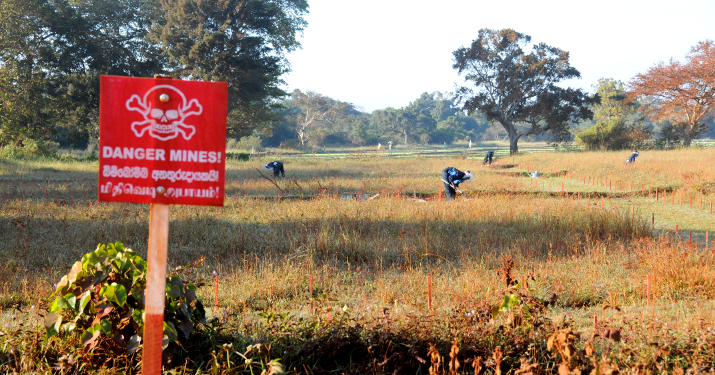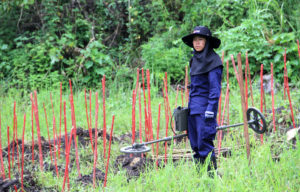
Photo: CC by DFID
Much fewer land mine victims
The number of victims of land mines and cluster munitions is going down. It is now at a historic low, according to a monitoring organisation.
Share
De-mining Denmark
Denmark has been a signatory to the land mine treaty since its beginning, and the country was declared officially free of mines in 2012, after clearing the last of the 8000 mines planted by Nazi Germany on Danish beaches during World War Two.
Denmark also plays an active role in land mine clearing in other countries, through organizations like Danish Church Aid and Danish Demining Group. Both organisations are supported by official Danish development assistance, as well as private donations.
Other categories
Region: Global
Theme: Peace & security
Since 1999, the organisation Landmine and Cluster Munition Monitor has kept an eye on the number of victims from land mines, unexploded cluster munitions and other types of lethal leftovers from wars and conflicts. These forgotten munitions often remain deadly long after the conflicts are over, threatening civilians for decades after.
The latest numbers show that the lurking weapons claimed 3308 victims in 2013 – about nine victims every day. This is a drop by almost two-thirds compared to the turn of the millennium, when the number was about 25 victims every day worldwide. Even though there is still a long way to go before the world is free of land mines, it means that thousands of people now avoid being maimed or killed each year.
Global ban on land mines
The reason for the drop in land mine victims is that many countries have joined the Ottawa Treaty from 1999, which bans anti-personnel mines. The treaty was drafted at the urge of the UN, emphasising that land mines don’t distinguish between friend and foe, and that the weapons lie dormant in the ground for many years, causing great suffering for civilians. Almost half the victims are children.
When the treaty was signed, almost 110 million mines lay in the ground worldwide, and every year, two million more were added. 89 countries signed the treaty when it was drafted, pledging not to produce, use, store, or supply land mines to other countries. At the same time, the countries committed to clear all existing minefields on their lands. Now, the group has grown to 162 countries.
The last five years, 973 square kilometres of minefields have been cleared. This means that more than 1.5 million anti-personnel mines have been safely destroyed. More than 107.000 anti-tank mines have been cleared as well. These have enough explosive force to wreck armour, which makes them extremely dangerous to civilian vehicles.
The number of victims is also decreasing in countries like Afghanistan, Cambodia and Colombia, all heavily mined countries where the numbers of victims have been the highest in the last 15 years. In Syria, however, things are taking a turn for the worse. The civil war ravaged country has not signed the land mine treaty, and the numbers of land mine victims in Syria have tripled from 2012 to 2013.







